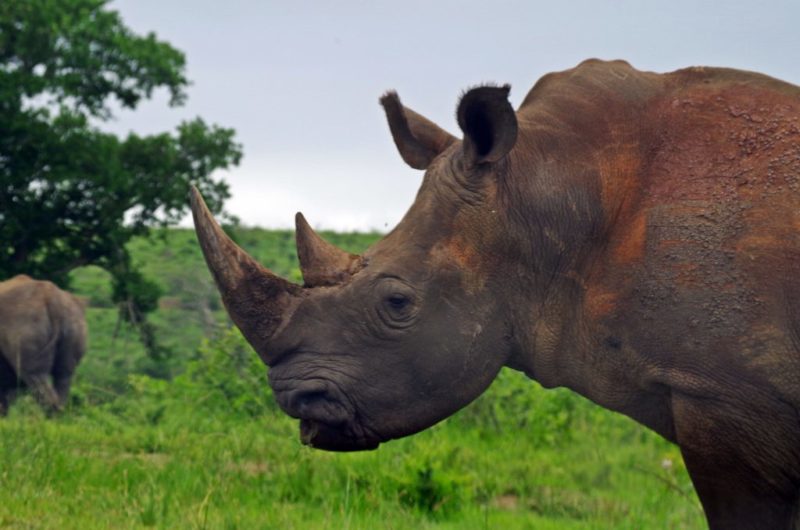Facts about the Rhinoceros – (Ceratotherium simum)
Rhinoceroses are large, herbivorous mammals identified by their characteristic horned snouts. The word „rhinoceros“ comes from the Greek „rhino“ (nose) and „ceros“ (horn). The term white rhino is actually a mistranslation; the Dutch settlers in South Africa initially called them “Weid mond rhino”, meaning “Wide-mouth rhino.” White and black rhinos are similar in color. The most notable difference between white and black rhinos are their mouths. Because black rhinos are browsers, they have smaller, hook-shaped lips that allow them to grasp prickly shrubs and trees.
WHITE RHINOCEROS CHARACTERISTICS
The White Rhinoceros or Square-lipped Rhinoceros (Ceratotherium simum)
They have almost no hair. They have a squared (not pointed) upper lip, a longer skull and less sharply defined forehead and a more pronounced shoulder hump than the Black rhino which supports its large head. White rhinos have two horns, the front one averaging 60 centimetres long, but occasionally reaching 150 centimetres.

BLACK RHINOCEROS CHARACTERISTICS
The Black rhinoceros (Diceros Bicornis), is sometimes called the ‘Hooked-lip rhino’.
Black rhinos have a ‘prehensile’ lip – ‘prehensile’ meaning – adapted for grasping and holding. The Black Rhinos prehensile lip is used much like a finger to select and pick the twigs and leaves that they prefer. The Black Rhinos skin harbours many external parasites, which are eaten by birds such as the ox peckers and egrets that live with the rhino.

Details of a Black & White Rhino
Size:
White Rhino: 1,8m (at shoulder)
Black Rhino: 1,4m (at shoulder)
Weight:
WR – Male: up to 2400kg; Female: average 1600kg
BR – Male / Female: 800kg – 1400kg
Habitat & Distribution:
Flat undulating terrain with grasslands to feed,
thick cover to rest up and water to drink and wallow.
Variety of habitats, ranging from the deserts of Namibia through wooded
grasslands to broadleaved woodlands and acacia savannahs
Gestation # of young:
16 months / 1
Food:
The white rhinos are grazers. Prefers short, fresh growth
The black rhinos diet consists of leaves, branches, shoots, fruit and
other plant material taken from trees and shrubs. Other animals benefit
from their diet, as the lack of woody plants allows for grass to grow.
Predators:
Humans; calves preyed on by lions and hyenas



